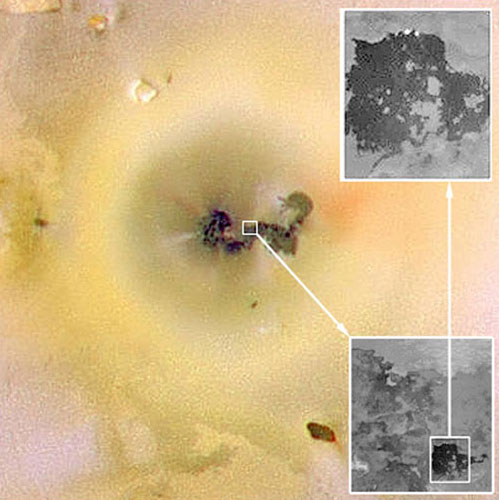|
from HoloScience Website
Dec 16, 2004
Credit: Planetary
Image Research Lab. (PIRL), Lunar and Planetary Lab. (LPL),
University of Arizona The photograph above was taken by the Galileo probe from a position over the plume of the “volcano” Prometheus on Jupiter’s moon Io, as it spewed material 100 kilometers (62 miles) into space. The NASA release in October, 2000 reported that the insets for this photograph,
In the electrical
interpretation, the two bright spots in the highest
resolution inset are cathode arcs seen diffusely through
their jets, as they continue to encircle the darker area exposed by
prior etching of the surface. The hot spots are exactly where the
electric model, as proposed by Wallace Thornhill,
had predicted. Finding no volcano, NASA scientists
were left to speculate on how a “lava lake” could generate
the observed plumes and jets many miles above the surface.
|
